
Concept explainers
(a)
Interpretation:
The given compound is a
Concept Introduction:
Carbonyl groups are the one which contain a double bond between carbon and oxygen atom.
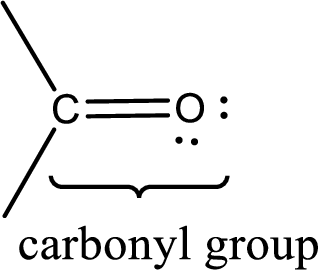
If a hydroxyl group is attached to a carbonyl group means it is known as carboxyl group. This can be represented as shown below,
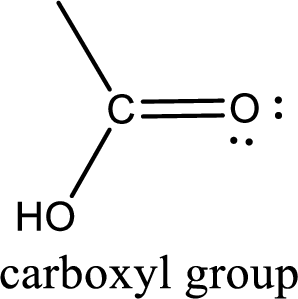
The compounds that contain carboxyl functional group are known as carboxylic acids.
(b)
Interpretation:
The given compound is a carboxylic acid or not has to be indicated.
Concept Introduction:
Carbonyl groups are the one which contain a double bond between carbon and oxygen atom. Aldehydes and ketones possess this carbonyl functional group in it. The structural representation of a carbonyl group can be given as shown below,
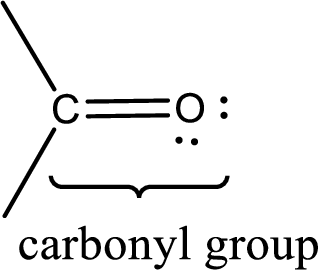
If a hydroxyl group is attached to a carbonyl group means it is known as carboxyl group. This can be represented as shown below,
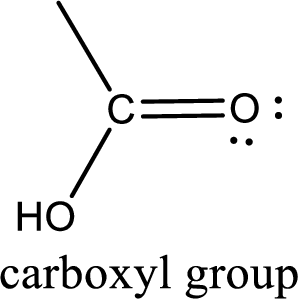
The compounds that contain carboxyl functional group are known as carboxylic acids.
(c)
Interpretation:
The given compound is a carboxylic acid or not has to be indicated.
Concept Introduction:
Carbonyl groups are the one which contain a double bond between carbon and oxygen atom. Aldehydes and ketones possess this carbonyl functional group in it. The structural representation of a carbonyl group can be given as shown below,
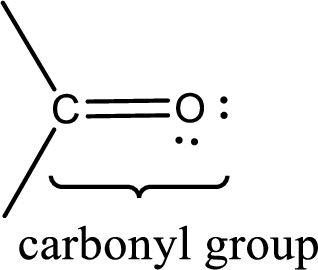
If a hydroxyl group is attached to a carbonyl group means it is known as carboxyl group. This can be represented as shown below,
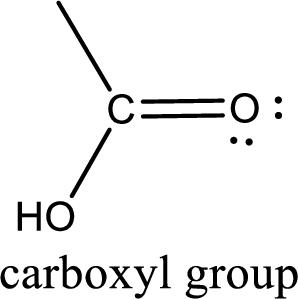
The compounds that contain carboxyl functional group are known as carboxylic acids.
(d)
Interpretation:
The given compound is a carboxylic acid or not has to be indicated.
Concept Introduction:
Carbonyl groups are the one which contain a double bond between carbon and oxygen atom. Aldehydes and ketones possess this carbonyl functional group in it. The structural representation of a carbonyl group can be given as shown below,
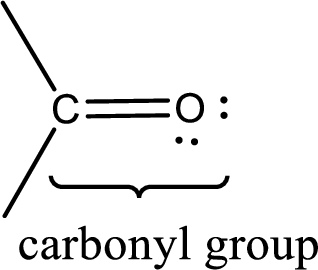
If a hydroxyl group is attached to a carbonyl group means it is known as carboxyl group. This can be represented as shown below,
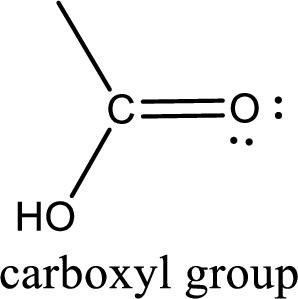
The compounds that contain carboxyl functional group are known as carboxylic acids.
Trending nowThis is a popular solution!

Chapter 16 Solutions
General, Organic, and Biological Chemistry
- Redraw the flowchartarrow_forwardredraw the flowchart with boxes and molecules written in themarrow_forwardPart I. a) Elucidate the structure of compound A using the following information. • mass spectrum: m+ = 102, m/2=57 312=29 • IR spectrum: 1002.5 % TRANSMITTANCE Ngg 50 40 30 20 90 80 70 60 MICRONS 5 8 9 10 12 13 14 15 16 19 1740 cm M 10 0 4000 3600 3200 2800 2400 2000 1800 1600 13 • CNMR 'H -NMR Peak 8 ppm (H) Integration multiplicity a 1.5 (3H) triplet b 1.3 1.5 (3H) triplet C 2.3 1 (2H) quartet d 4.1 1 (2H) quartet & ppm (c) 10 15 28 60 177 (C=0) b) Elucidate the structure of compound B using the following information 13C/DEPT NMR 150.9 MHz IIL 1400 WAVENUMBERS (CM-1) DEPT-90 DEPT-135 85 80 75 70 65 60 55 50 45 40 35 30 25 20 ppm 1200 1000 800 600 400arrow_forward
- • Part II. a) Elucidate The structure of compound c w/ molecular formula C10 11202 and the following data below: • IR spectra % TRANSMITTANCE 1002.5 90 80 70 60 50 40 30 20 10 0 4000 3600 3200 2800 2400 2000 1800 1600 • Information from 'HAMR MICRONS 8 9 10 11 14 15 16 19 25 1400 WAVENUMBERS (CM-1) 1200 1000 800 600 400 peak 8 ppm Integration multiplicity a 2.1 1.5 (3H) Singlet b 3.6 1 (2H) singlet с 3.8 1.5 (3H) Singlet d 6.8 1(2H) doublet 7.1 1(2H) doublet Information from 13C-nmR Normal carbon 29ppm Dept 135 Dept -90 + NO peak NO peak 50 ppm 55 ppm + NO peak 114 ppm t 126 ppm No peak NO peak 130 ppm t + 159 ppm No peak NO peak 207 ppm по реак NO peakarrow_forwardCould you redraw these and also explain how to solve them for me pleasarrow_forwardNonearrow_forward
- Draw the curved-arrow mechanism with the drawings of the molecules, not just abbreviations. -NO₂ Sn, HCl (aq) E D H (CH3CO)₂O -NH2 CH3arrow_forwardWhat is/are the product(s) of the following reaction? Select all that apply. * HI A B C OD OH A B OH D Carrow_forwardIn the image, the light blue sphere represents a mole of hydrogen atoms, the purple or teal spheres represent a mole of a conjugate base. A light blue sphere by itself is H+. Assuming there is 2.00 L of solution, answer the following: The Ka of the left & right solution is? The pH of the left & right solution is? The acid on the left & right is what kind of acid?arrow_forward
 Organic And Biological ChemistryChemistryISBN:9781305081079Author:STOKER, H. Stephen (howard Stephen)Publisher:Cengage Learning,
Organic And Biological ChemistryChemistryISBN:9781305081079Author:STOKER, H. Stephen (howard Stephen)Publisher:Cengage Learning, General, Organic, and Biological ChemistryChemistryISBN:9781285853918Author:H. Stephen StokerPublisher:Cengage Learning
General, Organic, and Biological ChemistryChemistryISBN:9781285853918Author:H. Stephen StokerPublisher:Cengage Learning Introduction to General, Organic and BiochemistryChemistryISBN:9781285869759Author:Frederick A. Bettelheim, William H. Brown, Mary K. Campbell, Shawn O. Farrell, Omar TorresPublisher:Cengage Learning
Introduction to General, Organic and BiochemistryChemistryISBN:9781285869759Author:Frederick A. Bettelheim, William H. Brown, Mary K. Campbell, Shawn O. Farrell, Omar TorresPublisher:Cengage Learning Chemistry for Today: General, Organic, and Bioche...ChemistryISBN:9781305960060Author:Spencer L. Seager, Michael R. Slabaugh, Maren S. HansenPublisher:Cengage Learning
Chemistry for Today: General, Organic, and Bioche...ChemistryISBN:9781305960060Author:Spencer L. Seager, Michael R. Slabaugh, Maren S. HansenPublisher:Cengage Learning



